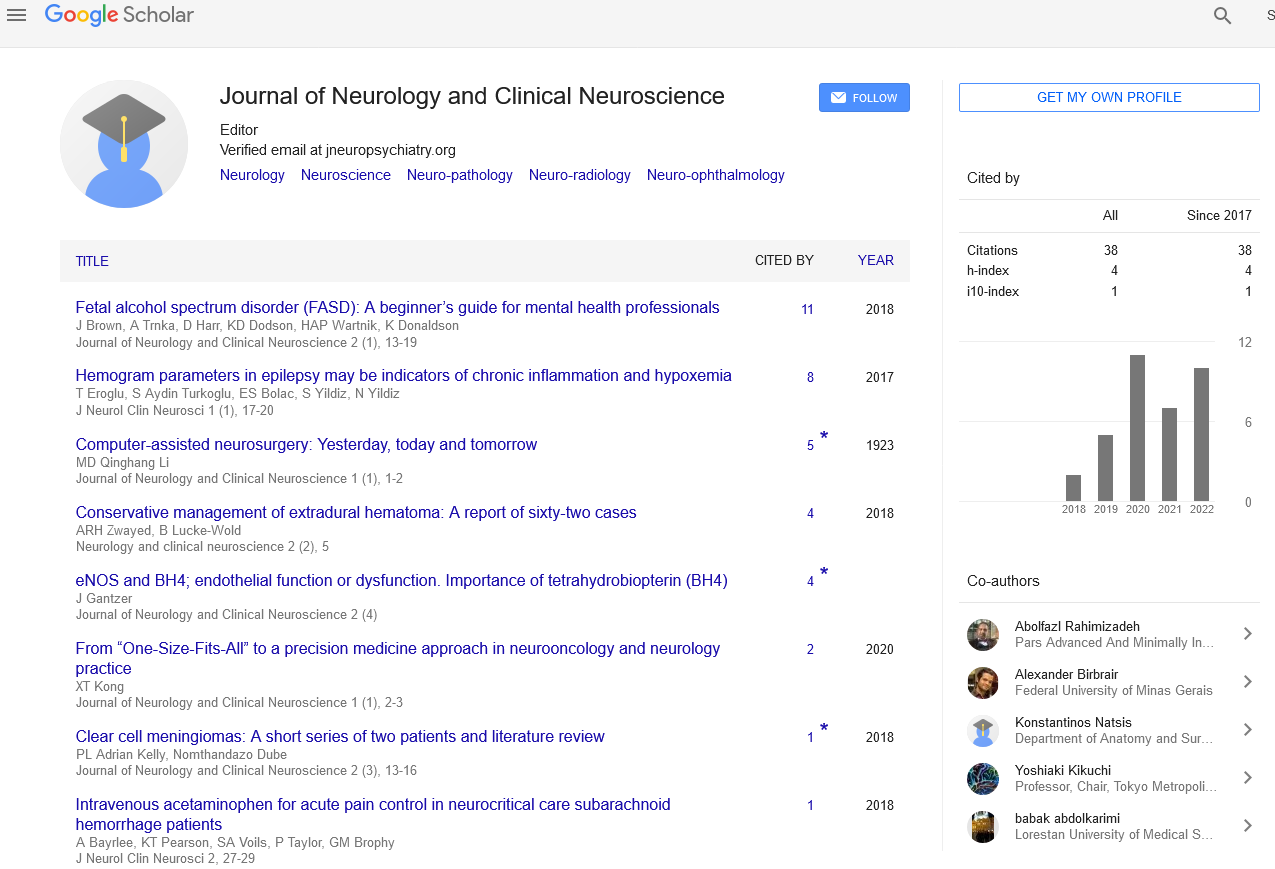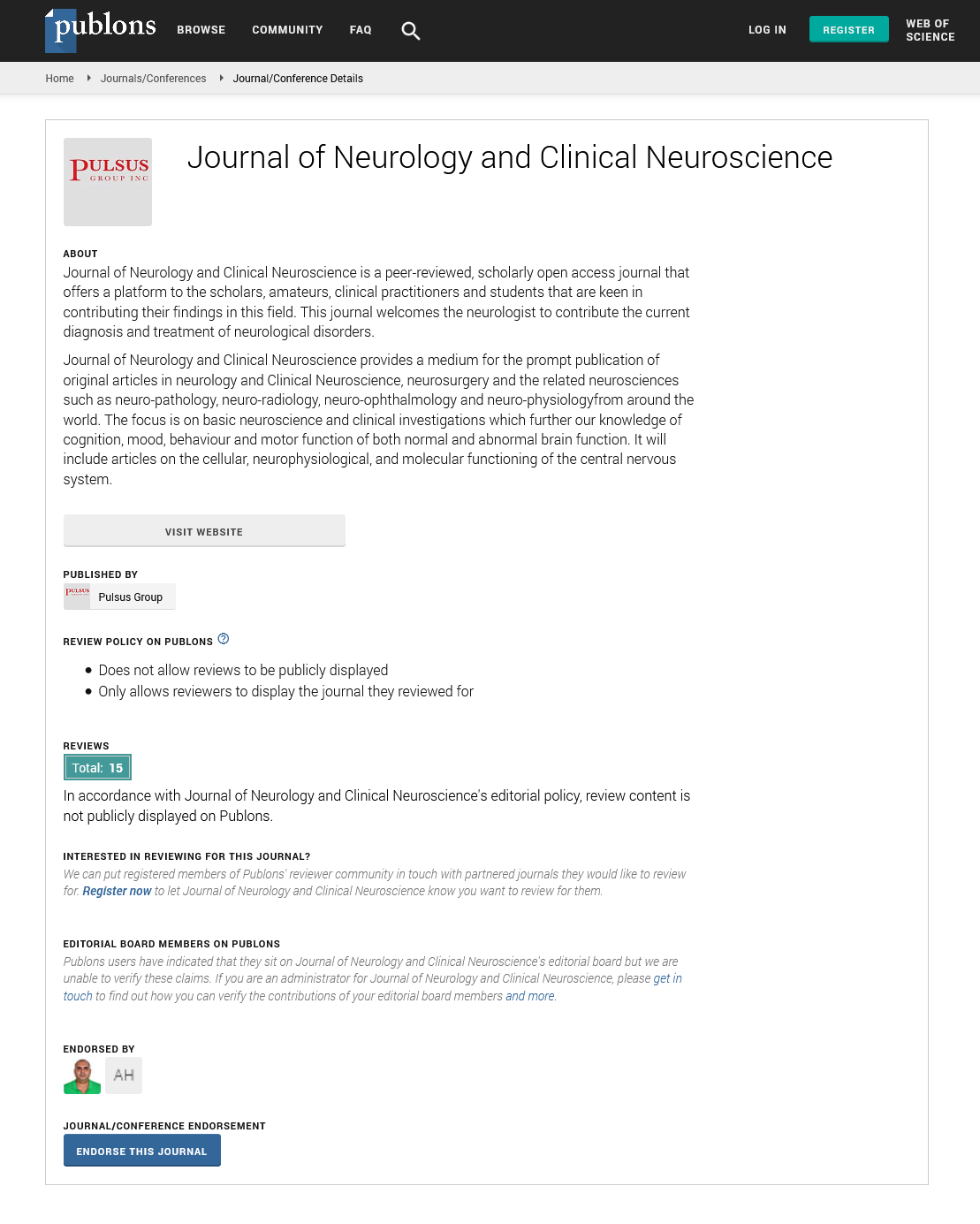Unveiling the autism epidemic
Received: 19-Mar-2018 Accepted Date: Mar 20, 2018; Published: 26-Mar-2018
Citation: Smiley K, Gerstein B, Nelson S. Unveiling the autism epidemic. J Neurol Clin Neurosci. 2018;2(2):1.
This open-access article is distributed under the terms of the Creative Commons Attribution Non-Commercial License (CC BY-NC) (http://creativecommons.org/licenses/by-nc/4.0/), which permits reuse, distribution and reproduction of the article, provided that the original work is properly cited and the reuse is restricted to noncommercial purposes. For commercial reuse, contact reprints@pulsus.com
Editorial
Over the past 40 years, Autism Spectrum Disorder (ASD) has experienced a significant spike in diagnostic prevalence. In a 2012 survey of eight year olds in the United States 1 in 68 tested positive for ASD, compared to 1 in 2778 children aged 8-12 in a 1980 survey [1]. The question arises: are more children developing autism, or is there simply an increase in diagnosis and diagnostic criteria?
A significant factor in the increases in diagnoses can be attributed to public awareness of autism. In the recent decades, increased funding for research and inclusion of ASD in individualized education by the Individuals with Disabilities Education Act (IDEA) has increased public awareness for autism and influenced parents to have their children screened. Through the disabilities act, schools are required to offer comprehensive evaluation for ASD, which increases the avenue for diagnosis beyond just health care providers [2]. Families are also encouraged to test their children at younger ages in order to get them specialized help as early developmentally, as possible. Regions in which autism aid is more readily available tend to offer higher rates of autism screening and find higher incidence as compared to regions that offer less aid or assistance.
Furthermore, genetic studies of autism show that the likelihood of a child testing positive for autism is increased when a sibling has already been diagnosed with ASD [3-5]. Because of this, autism cases are identified earlier within families with already diagnosed children, contributing to the increased prevalence. This may also be related to genetic and epigenetic causes that are increasingly being recognized as causative, especially with recent advances in testing such as whole exome sequencing [6].
Diagnostic advances and a broadening of the operational definition of autism has changed within the past decades, potentially contributing to this change in prevalence. The standards a child has to meet to be considered autistic has widened, most significantly on the mild criteria [2]. Additionally, the broad range of symptoms and lack of concrete biological markers previously limited diagnosis to the most severe cases. A 2005 study looked at data from the California Department of Developmental Services and accredited 26.4% of the increase in Autism cases to changes in diagnostic processes and accretion [7]. Disparity between autism caseloads in studies across the United States support the claim that much of the increased prevalence is due to diagnosis variations. Another study done in Australia showed similar findings [8].
It has been claimed that vaccines, especially mercury-containing vaccines, contribute to this rise in prevalence. However, there is no factual evidence to support this claim. Clearly, vaccinations reduce childhood morbidity and mortality, and thus vaccinations should not be withheld due to fear of linkage to autism [9].
What is clear is that children should be routinely screened for ASD, since early identification and treatment can improve outcome [10,11]. It is likely that the true prevalence of autism is still underestimated, given that many children with mild autism may be missed or diagnosed late. Additionally, compliance by primary care doctors in screening for autism at well child checks is still not at 100% [12].
REFERENCES
- Christensen DL, Baio J, Braun KVN, et al. Prevalence and Characteristics of Autism Spectrum Disorder Among Children Aged 8 Years - Autism and Developmental Disabilities Monitoring Network, 11 Sites, United States, 2012. MMWR Surveill Summ. 2016;65(3):1-23.
- Fombonne E. The Prevalence of Autism. Jama. 2003;289(1):87-9.
- Georgiades S, Szatmari P, Zwaigenbaum L, et al. A Prospective Study of Autistic-Like Traits in Unaffected Siblings of Probands with Autism Spectrum Disorder. JAMA Psychiatry. 2013;70(1):42.
- Constantino JN, Todorov A, Hilton C, et al. Autism recurrence in half siblings: strong support for genetic mechanisms of transmission in ASD. Mol Psychiatry. 2013;18(2):137-8.
- Sandin S, Lichtenstein P, Larsson H, et al. The familial risk of autism. 2014;311(17):24794370.
- Waye M, Cheng HY. Genetics and Epigenetics of Autism (Review). Psychiatry Clin Neurosci. 2017.
- King M, Bearman P. Diagnostic change and the increased prevalence of autism. Int J Epidemiol. 2009;38(5):1224-34.
- May T, Sciberras E, Brignell A, et al. Autism spectrum disorder: updated prevalence and comparison of two birth cohorts in a nationally representative Australian sample. BMJ Open. 2017;7(5):e015549.
- Taylor LE, Swerdfeger AL, Eslick GD. Vaccines are not associated with autism: An evidence-based meta-analysis of case-control and cohort studies. Vaccine. 2014;32(29):3623-9.
- Zwaigenbaum L, Bauman ML, Fein D, et al. Early Screening of Autism Spectrum Disorder: Recommendations for Practice and Research. Pediatrics. 2015;136:S41-S59.
- Zwaigenbaum L, Bauman ML, Choueiri R, et al. Early Intervention for Children With Autism Spectrum Disorder Under 3 Years of Age: Recommendations for Practice and Research. Pediatrics. 2015;136:S60-S81.
- Daniels AM, Mandell DS. Children’s compliance with american academy of pediatrics’ well-child care visit guidelines and the early detection of autism. J Autism Dev Disord. 2013;43(12):2844-54.





